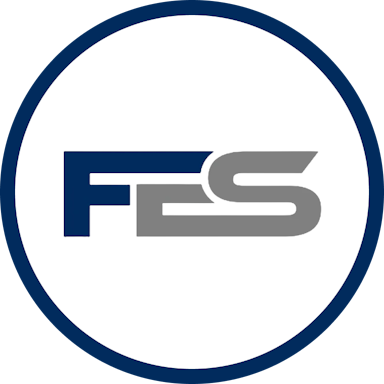Webinar: Student Loan Forgiveness Exposed: The Full Truth starts on May 28, 2024 at 18:00
in 12 days 13 hours 27 minutes 48 seconds

Demystifying Student Loan Debt Relief: What You Need to Know
What is Student Loan Debt Relief: What You Need to Know
In an era where higher education is synonymous with mounting debt, understanding the nuances of student loan debt relief is more than necessary—it's a lifeline. With the collective student loan debt in the U.S. soaring to unprecedented heights, the conversation around debt relief has never been more critical. This guide aims to demystify the complex landscape of student loan debt relief, offering clarity and direction to those weighed down by educational loans. From forgiveness programs to repayment plans and consolidation options, we explore the various avenues available to borrowers seeking respite. As we peel back the layers of student loan debt relief, our goal is to arm you with the knowledge needed to navigate these waters confidently, ultimately steering you toward a more secure financial future.
Introduction to Student Loan Debt Relief
The journey towards understanding student loan debt relief begins with a clear definition of what it entails. At its core, student loan debt relief encompasses various programs and strategies designed to alleviate the financial burden of educational loans for borrowers. These relief measures aim to make loan repayment more manageable, whether through reducing monthly payments, lowering interest rates, or even forgiving a portion of the loan under specific conditions.
The need for such relief programs stems from the growing financial strain that student loans place on individuals. As tuition fees climb, more students find themselves relying on loans to finance their education, leading to significant debt upon graduation. The repercussions of this debt are far-reaching, affecting borrowers' financial stability, life choices, and mental health.
Several types of debt relief programs offer a beacon of hope. These include:
Income-Driven Repayment Plans (IDR)
: These plans adjust your monthly payments to a manageable portion of your income, ensuring that your student loan debt doesn't overwhelm your finances. As your income fluctuates, so do your payments, making this a flexible option for many.
Statistics show that as of 2020, about 8.1 million federal student loan borrowers were enrolled in income-driven repayment plans, accounting for nearly 40% of all borrowers.
Public Service Loan Forgiveness (PSLF)
: Serving the public comes with rewards. If you work in certain public service jobs and make 120 qualifying payments, the PSLF program may forgive the remaining balance on your Direct Loans.
As of September 2021, the Department of Education reported that over 1.3 million borrowers had submitted 2.7 million Employment Certification Forms (ECFs) for the PSLF program.
Student Loan Consolidation
: Combining multiple federal student loans into a single loan, this option simplifies your payments. While it can extend your repayment period, it might also offer you access to additional loan forgiveness programs.
According to the Federal Student Aid Office, as of December 2021, there were over 18.6 million borrowers with a consolidated loan balance totaling over $1.1 trillion.
Deferment and Forbearance
: Life's unpredictable nature sometimes necessitates pausing your loan payments. Both deferment and forbearance offer you this respite without harming your credit score, allowing you to get back on your feet without the looming pressure of immediate repayments.
As of the first quarter of 2020, over 3.6 million borrowers had loans in deferment, while over 2.7 million borrowers had loans in forbearance.
State-Sponsored Relief Programs
: Various states offer their own relief programs, each with unique benefits and eligibility criteria. These can complement federal programs, offering additional layers of support.
By understanding these key programs, you can navigate the complex terrain of student loan debt relief with greater confidence, making informed decisions about managing your student loan debt effectively.
Eligibility Criteria and Application Process
Embarking on the journey toward student loan debt relief begins with understanding the eligibility criteria and navigating the application process. Each debt relief program has its unique set of requirements and steps, designed to ensure that the assistance reaches those who need it most.
Determine Your Eligibility
: Start by reviewing the specific criteria for the relief program you're interested in. Factors such as your income, employment type, loan type, and repayment history can all play pivotal roles in determining your eligibility.
Gather Necessary Documentation
: Armed with knowledge, the next step is compiling the required documents. These may include income verification, employment certification, and loan statements, which will serve as the foundation of your application.
Complete the Application Form
: With documents in hand, fill out the application form with meticulous attention to detail. Accuracy is key, as any discrepancies can delay the process.
Submit and Follow-Up
: After submission, remain proactive. Track your application's status and be prepared to provide additional information or clarification if needed.
Consult with a Financial Advisor
: Navigating the intricacies of debt relief can be daunting. Seeking advice from a financial advisor can provide personalized guidance tailored to your specific situation.
By meticulously following these steps, you can confidently apply for the student loan debt relief program that best suits your needs, bringing you one step closer to financial freedom.
Impact of Debt Relief on Borrowers
Experiencing the impact of student loan debt relief can be transformative for borrowers, reshaping their financial landscapes and personal well-being. The relief not only eases the monetary burden but also rekindles hope for a more stable and prosperous future.
Financial Breathing Room
: Debt relief often results in reduced monthly payments or, in some cases, complete loan forgiveness. This newfound financial flexibility enables borrowers to allocate resources towards other life goals, such as buying a home or saving for retirement.
Credit Score Improvement
: Regular, on-time payments made easier by relief programs can positively impact credit scores. A healthier credit score opens doors to new financial opportunities and better terms on future loans or credit lines.
Reduced Financial Stress
: The psychological relief that comes with manageable debt cannot be overstated. Reduced stress levels lead to improved mental health, higher life satisfaction, and a more optimistic outlook on life.
Increased Career Flexibility
: With less pressure to meet hefty loan repayments, individuals can pursue careers they're passionate about, not just those that pay the bills. This freedom often leads to greater job satisfaction and personal fulfillment.
Catalyst for Economic Activity
: On a broader scale, debt relief can stimulate economic growth. With more disposable income, individuals are likely to spend more, contributing to the overall economic vitality.
The positive ripple effects of student loan debt relief extend far beyond individual finances, touching every aspect of borrowers' lives and, by extension, the broader economy.
Future of Student Loan Debt Relief
As we look towards the horizon, the future of student loan debt relief appears promising and laden with potential changes. Staying informed and adaptable is key for borrowers navigating this evolving landscape.
Policy Changes
: Legislative developments and policy shifts can significantly impact debt relief programs. Borrowers should stay abreast of new laws and reforms that could affect their loan repayment strategies.
Technological Advancements
: Technology continues to streamline the application and management processes for debt relief programs. Innovations like digital platforms and apps make it easier for borrowers to access information and manage their loans effectively.
Increased Awareness and Education
: As awareness of student loan debt relief grows, so does the availability of resources and educational tools. This empowerment enables borrowers to make more informed decisions about their debt management.
Explore More Financial Insights
Browse our handpicked articles for fresh insights and strategies in finance. Your next financial breakthrough could be just a click away with FES Inc.

8359 Beacon Blvd #315 Fort Myers, FL 33907
Assisting with Student Loan Document Preparation Financial Enhancement Services (FES) is dedicated to professional document preparation, and we do not negotiate, adjust, or settle debts. Every federal student borrower has the opportunity and is encouraged to apply for federal repayment or forgiveness programs directly through the US Department of Education at no cost. FES is not a lender or legal advice service. For legal or financial advice, please consult with a professional attorney or financial advisor. Each revision maintains the original message while improving clarity and conciseness, ensuring that the information is easily digestible and accessible for readers.


